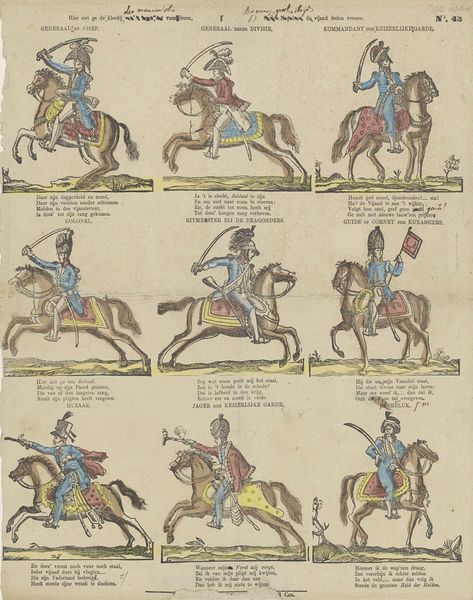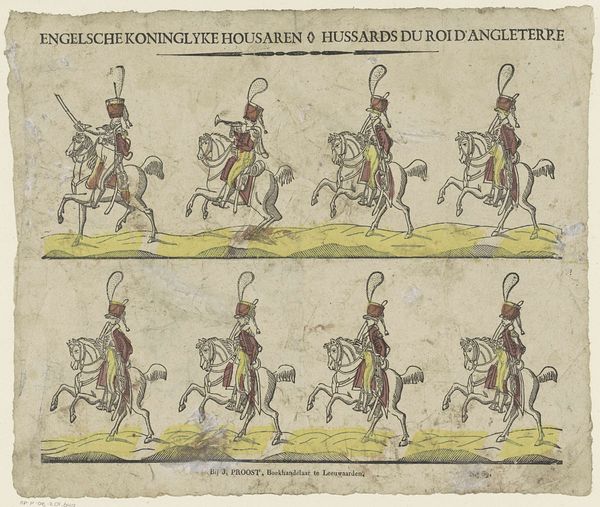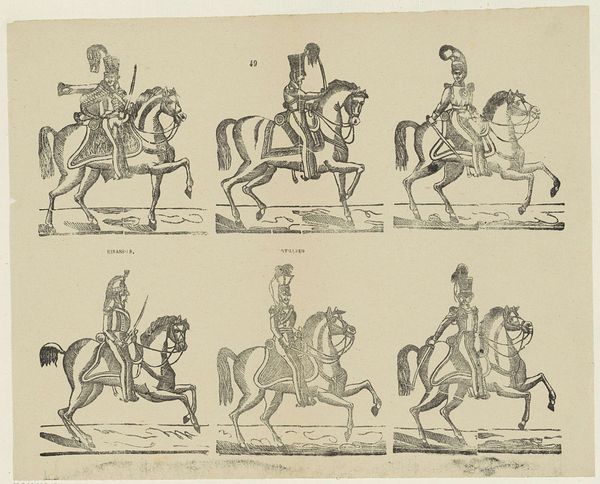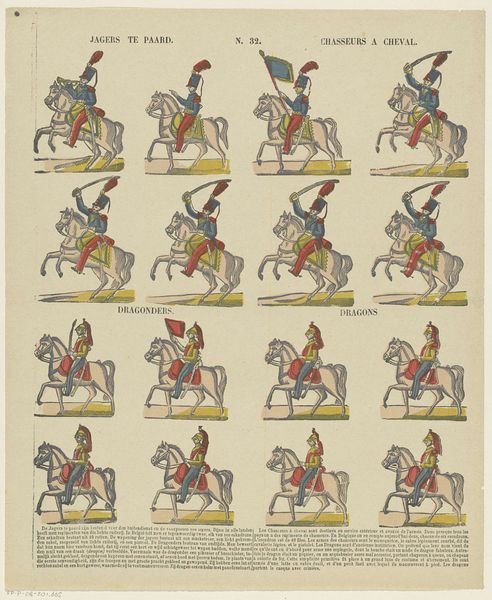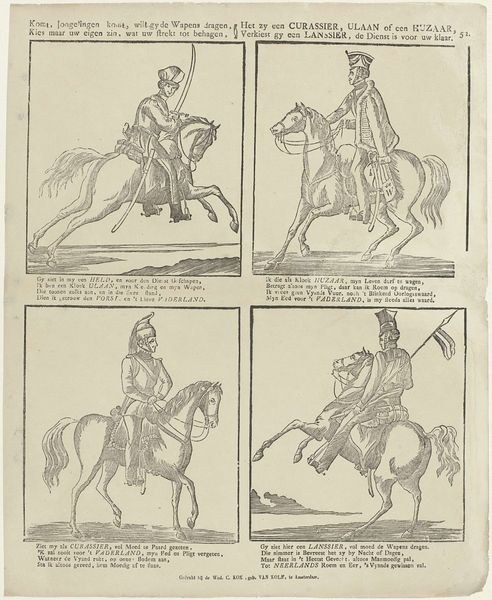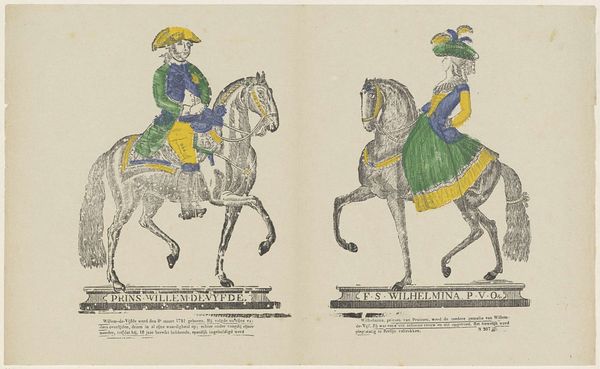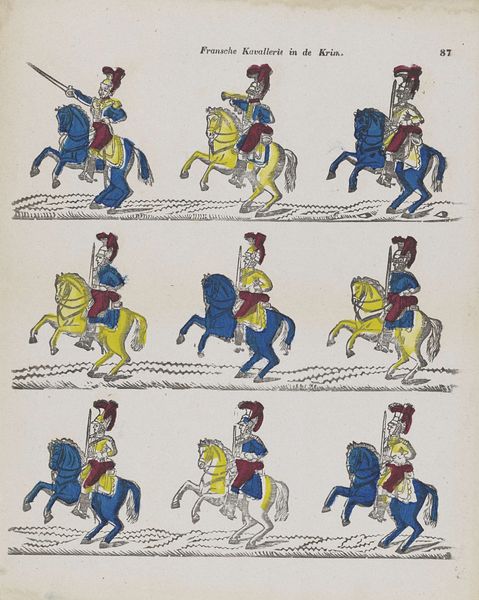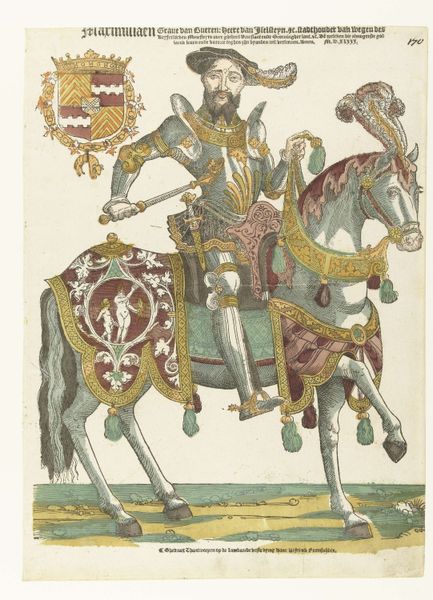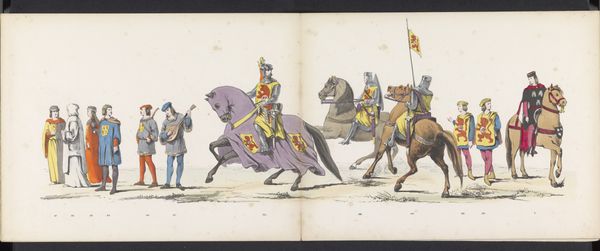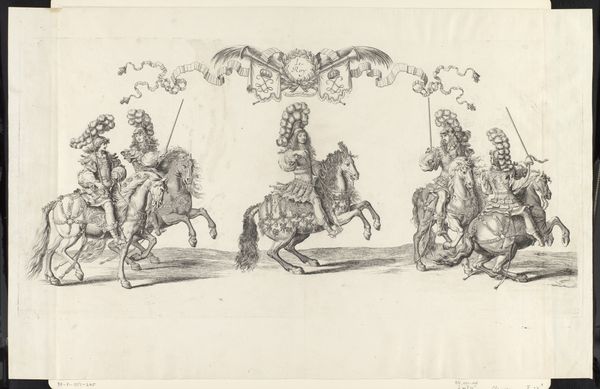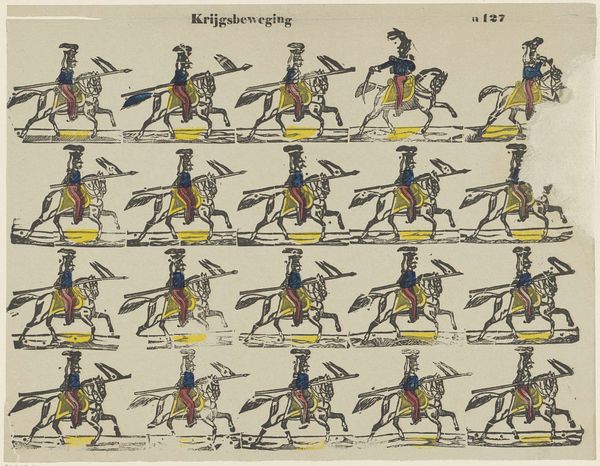
graphic-art, lithograph, print
#
graphic-art
#
lithograph
# print
#
figuration
#
line
Dimensions: height 294 mm, width 396 mm
Copyright: Rijks Museum: Open Domain
Editor: So this lithograph, “Militairen te paard,” dating from somewhere between 1827 and 1894, shows rows of toy soldiers on horseback. They’re like figurines set against simple colored bars. I'm struck by how it blends high art with something so obviously mass-produced, like a child's plaything. What catches your eye about this work? Curator: For me, the interest lies in unpacking the layers of production inherent in a piece like this. Lithography, as a printmaking technique, facilitated the replication of images on a relatively large scale. Who was this image produced *for*? Editor: Presumably children, given the subject. Curator: Possibly, but what does it signify when military imagery enters the domestic sphere as a consumer good? How might this "toy" participate in the cultural construction of military power and national identity? Think about the access to such lithographs compared to commissioned oil paintings – who is being indoctrinated, and how does accessibility to different material productions dictate this? Editor: So you’re saying the seemingly innocent image actually implicates ideas about manufacturing and consumption in solidifying military might. Does the relative ease and inexpensiveness of lithography open new conversations, then, about the circulation of political ideology through images? Curator: Precisely. This isn't simply about representing soldiers; it's about how their representation becomes accessible, commodified, and consumed. Notice too, the flatness of the figures, almost like paper dolls – what does the *making* suggest about the intended use? This simplification allows easier mass reproduction but it also *cheapens* a visual that might otherwise denote a high level of artistry. Editor: That's a perspective I hadn't considered – how the method of production fundamentally changes our perception of the image itself and its cultural role. I will definitely start looking into these intersections more closely! Curator: Indeed! It’s in the materials and modes of circulation where the true narratives often reside.
Comments
No comments
Be the first to comment and join the conversation on the ultimate creative platform.
